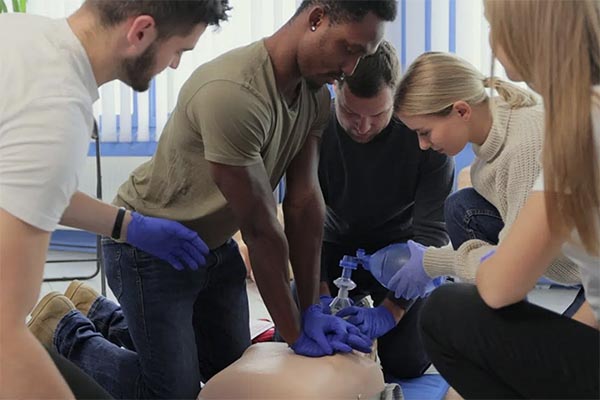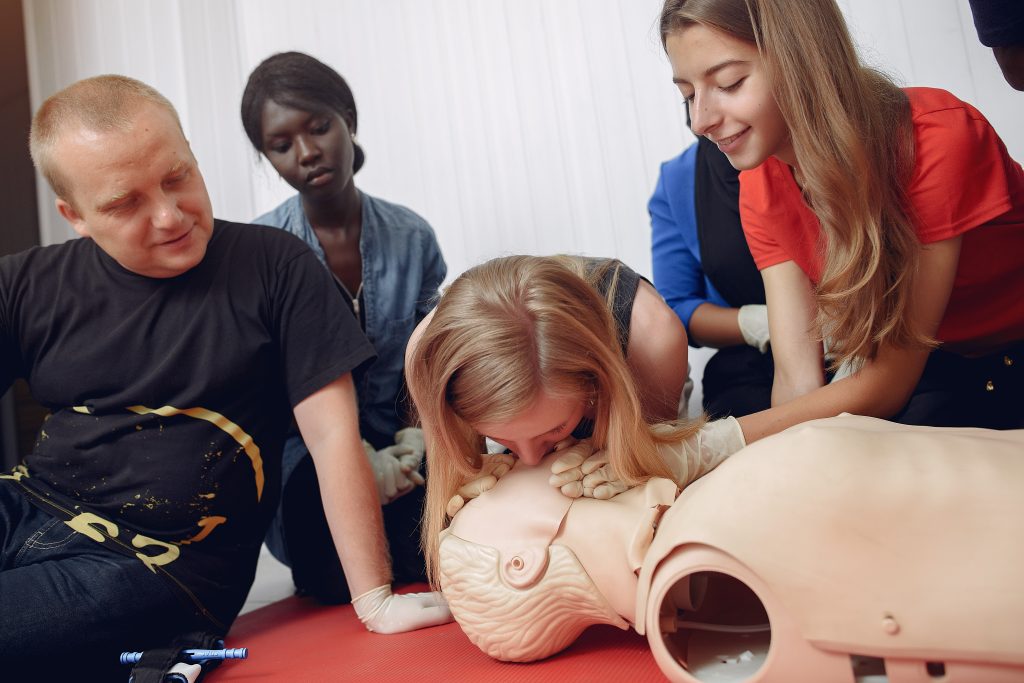
When caring for children, being prepared for emergencies is crucial. Understanding how to handle common first aid scenarios can make a significant difference in how you manage injuries and illnesses in children. In this guide, we will explore various situations and offer practical first aid tips that every caregiver should know.
First aid for children is more than just treating minor cuts and bruises. It’s about providing immediate care in emergencies to prevent conditions from worsening before professional medical help arrives. First aid training equips caregivers with the skills to handle various situations, ensuring children’s safety and well-being.

Before diving into specific scenarios, let’s cover some first aid basics:
Children are active and often experience cuts and scrapes. Here’s how to handle them:
Bruises occur when small blood vessels break under the skin. They’re usually not serious but can be painful.
Burns can be alarming but are manageable with the right first aid techniques.
Choking is a common and frightening emergency in children. Quick and effective action is crucial.
Accidental poisoning can occur if a child ingests harmful substances.
Nosebleeds are common and usually not serious, but they can be unsettling.

While many first aid scenarios can be managed with basic knowledge, it’s important to know when professional medical help is necessary. Seek help if:
First aid training is essential for anyone involved in childcare. By understanding and applying first aid basics, you can provide immediate assistance in emergencies, minimize the severity of injuries, and ensure the safety and health of children in your care. Remember, being prepared is the first step to effectively handling common first aid scenarios.
In emergencies, every second counts, and knowing CPR and First Aid can make all the difference. Equip yourself with the skills to respond effectively and confidently by enrolling in a certified CPR and First Aid class. “CPR Classes Near Me” offers comprehensive training that covers life-saving techniques and essential first aid knowledge. Don’t wait for an emergency to occur—be proactive and prepared to help those in need. Sign up today and take the first step toward becoming a valuable resource in your community. Remember, the life you save could be someone you love.
Our primary goal is to ensure that you receive a top-quality CPR/First Aid certification. With our in-person training in Austin, you can learn CPR and BLS in just one class. Your presence is all that’s needed to continue with your lesson! During your session, you will complete all the live-training components necessary to ensure you receive your AHA Healthcare Provider certification card.
Our CPR Classes in Austin are discounted to $59.95 (saving you $20), and our CPR + First Aid Class is offered at $79.95 (also saving you $20). When looking for CPR Classes, ensure to check for the American Heart Association seal. Other sites might seem cheaper but frequently lack the official training credentials demanded by employers.
Upon successful completion of the course, you will obtain a CPR certification that is valid for two years. The AHA CPR certification is recognized with the highest acceptance rate among employers nationwide.
Indeed! Enroll in any CPR Certification Austin BLS course to extend your certification for an additional two years. The in-person BLS course and the Renewal Class are identical.
Anyone capable of completing the course independently should consider pursuing CPR training and CPR Certification. There is no minimum age restriction for obtaining a CPR certification in Austin through the American Heart Association (AHA)..
CPR training needs to be carried out in person to guarantee its effectiveness. Our experienced instructors offer an engaging and dynamic learning experience. Typically, employers do not recognize CPR certifications that are obtained solely through online courses.
All authorized American Heart Association training centers are obligated to display the entire video. After a three-hour session with CPR Classes Near Me Austin, your BLS CPR eCard will be promptly issued by the instructor on the same day!